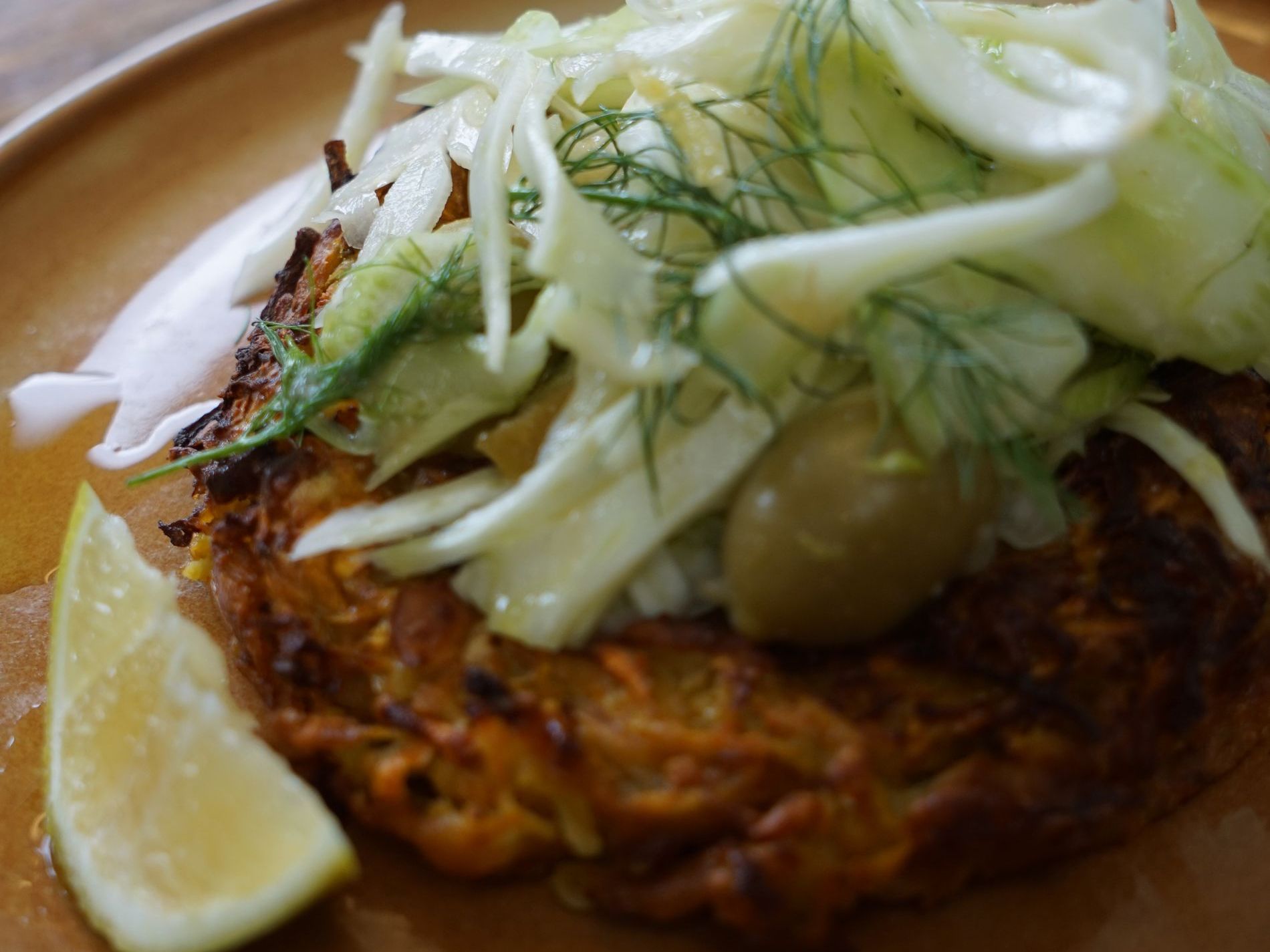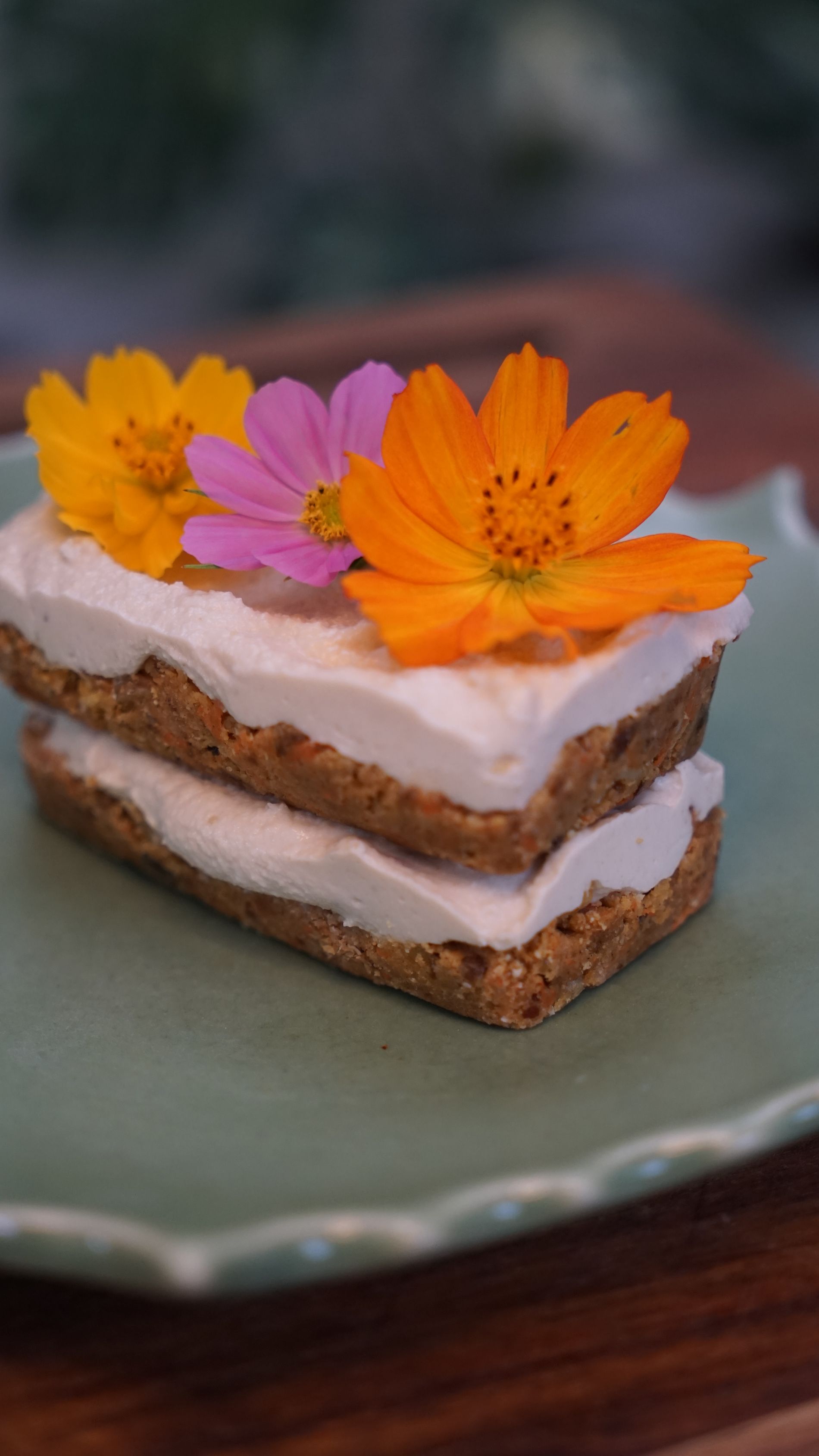Middle Eastern with Mark Kras
Libyan Squash salad
with lemon pickle
Ingredients:
- 1 butternut squash
- 1 red onion diced
- 1 red capsicum / long sweet
- peppers diced
- 1 tbsp smoked paprika
- Salt and pepper
- 2 lemons
- ⅓ cup sugar
- 1 cup white vinegar
- 3 garlic cloves
- 1 tbsp ground coriander
- Handful dill leaves
Method:
Step 1: Preheat the oven to 180 degrees celsius.
Step 2: Cut the squash in half and remove the seeds, cut off ¼ cup of squash to
pickle later.
Step 3: Season the remaining squash with olive oil and some salt. Roast on a
tray for 45 mins until tender, remove and let cool.
Step 4: Dice the reserved squash into small pieces and finely chop the rind of
two lemons and place in a heat proof bowl. Separately combine the vinegar,
sugar and ⅔ cup of water in a pan and bring to the boil until the sugar has
dissolved. Pour the brine over the squash and lemon - set aside to cool (this can
be made overnight).
Step 5: Over medium heat, add olive oil to a skillet, add onion, capsicum and
garlic and saute until soft, right before you take it off the heat add the paprika
and cook for 30 seconds until fragrant.
Step 6: Scoop the roasted squash into a large bowl, add the onion and capsicum
mixture, ground coriander and the pickled squash and lemon rind.
Step 7: Mix together add salt and lemon juice to taste, dress with dill leaves.
Charred Moroccan Carrot Salad
with Saffron Yoghurt
Ingredients:
- 4-5 large carrots
- Olive oil
- Juice of one lemon
- 200 grams of sheep yoghurt
- Pinch of Saffron
- Fresh dill leaves
- 2 preserved lemons rind only,
- thinly sliced
- ¼ cup of crushed hazelnuts
- Salt and Pepper
- 1 tbsp of smoked Paprika
- 1 tsp sumac
Method:
Step 1: Toss the carrots in a bowl with enough olive oil to cover and season with
salt and pepper.
Step 2: Using a cast iron skillet or stainless steel pan, place over high heat until
ripping hot.
Step 3: Place the whole carrots on the skillet and cook until charred, they should
be tender and may take a few minutes to get there, flip over and repeat. Once all
the carrots have been cooked, put them in a bowl and cover with plastic wrap to
allow to steam through (approx 10 mins).
Step 4: Steep a pinch of saffron fronts in ¼ cup hot water for 15 mins, in a bowl
combine the yoghurt with the saffron water till you have a beautiful golden
coloured yoghurt..
Step 5: Dice the carrots into bite size pieces, in a bowl combine olive oil, carrots,
lemon juice and smoked paprika. Dress with salt and pepper to taste.
Step 6: Place the dressed carrots over the yoghurt, sprinkle the crushed
hazelnuts, dill leaves and preserved lemon - finish with extra olive oil and sumac
to taste.
Roasted Sweet Potatoes
with candied hazlenuts and Date Syrup Molasses
Ingredients:
- 4 sweet potatoes peeled and
- cut into wedges
- Olive oil ½ cup rough crushed
- hazelnuts
- 2 tbsp brown sugar
- 2 tbsp honey
- Salt & pepper
- 2 preserved lemons, rind only
- finely sliced
- Pinch of saffron
- ½ cup of sheep yoghurt
- Date Syrup Molasses
Method:
Step 1: Bring a large pot of salt water to the boil and add the sweet potatoes,
reduce to medium heat and cook for 12 mins or just until tender, not falling apart.
Drain and put aside.
Step 2: Preheat an oven to 180 degrees celsius, in a small bowl combine the
honey, sugar and hazelnuts and place on a lined baking tray - roast for 15 mins
and put aside to cool down.
Step 3: Heat a cast iron pan over high heat until ripping hot.
Step 4: In a bowl mix the potatoes, salt and olive oil together and cook over on
the cast iron pan until well charred - only a few minutes each side.
Step 5: Steep a pinch of saffron fronts in ¼ cup hot water for 15 mins, in a bowl
combine the yoghurt with the saffron water till you have a beautiful orange
coloured yoghurt.
Step 6: Transfer to a serving dish the roasted sweet potatoes, drizzle with the
saffron yoghurt, preserved lemon slices, candied hazelnuts and dill leaves.
Step 7: Top with some olive oil and the date syrup molasses.
Note: You can substitute Date Syrup molasses with Pomegranate Molasses or
Carob Molasses - all depends on what you can get your hands on.
Focaccia Bread
with Tomato and Lemon Thyme
Ingredients:
- 12 grams of dry yeast
- 2 tsp of honey
- 600 grams plain unbleached
- flour
- 2.5 cups of warm water
- 15 grams of salt
- 8 tbsp of extra virgin olive oil
- Cherry tomatoes
- Fresh lemon Thyme picked
Method:
Step 1: In a large bowl combine the yeast, honey and water. Let it rest for 10
minutes. If your mixture isn’t creamy or foaming - you’ll need yeast which isn’t
dead.
Step 2: To the same bowl add the flour and salt and mix with a wooden spoon till
ingredients are combined.
Step 3: Once combined In another bowl pour the 4 tbsp olive oil and place the
dough in the centre, turn the dough to coat it in oil. Now cover it with plastic wrap
and let it rise. You can do this two ways, one in the fridge overnight or you can
let it rise at room temperature until it has doubled in size (3 - 4 hours) could be
quicker depending on how warm it is.
Step 4: When the dough is ready, pour 2 tbsp of olive oil into the baking tray
Using your hands or fork, pull each side of the dough over itself once and then
place into the tray. Let the dough rise again uncovered at room temperature until
it has doubled in size.
Step 5: Preheat your oven to 230 degrees celsius. You’ll know the dough is
ready once you poke it with your fingers and it springs back. Now lightly oil your
fingers and dimple the focaccia all over.
Step 6: Place your cherry tomatoes and fresh thyme all over the focaccia bread,
and with the remaining 2 tbsp pour over your focaccia and sprinkle with salt.
Bake until focaccia has puffed and is golden brown (around 25 mins depending
on the oven).
Note: you can substitute tomatoes and thyme for black grapes and marjoram for
a sweet flavour or tomatoes and rosemary. Test combinations of what’s in
season and you enjoy.
Other recipes/blogs you might be interested in



